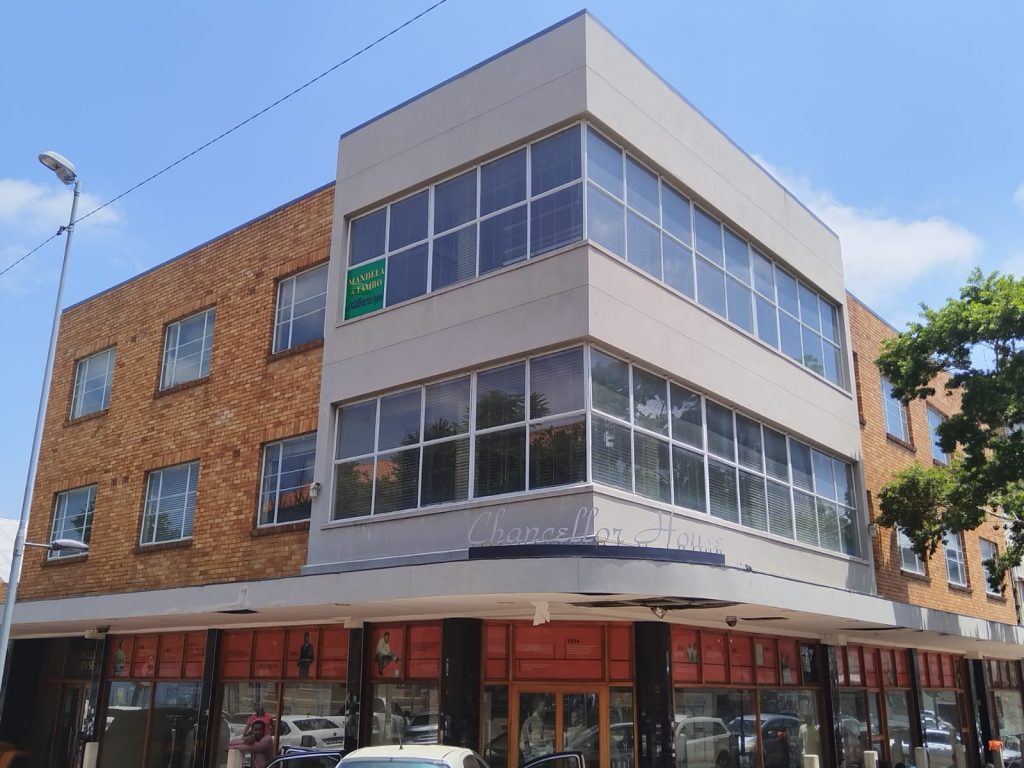
The Eduardo Villa Reclining Figure sculpture represents the residue of an earlier period in the history of the park – and the country.
Located on a raised mound in the middle of the park, the work was made by Villa in 1970 and donated to the City of Johannesburg by Anglo America in 1984, when it was installed in the Park. It was intended as a play statue for children, though not custom-made for this purpose. After being covered in graffiti, the artwork was restored in 2006 and painted with a dark-blue graffiti proof paint. In spite of these efforts, the work has been subjected to various scrawlings on its surface.
Eduardo Villa was born in Bergamo, Italy and arrived in South Africa in 1942 as a prisoner of war, and after his release in 1947 decided to make Johannesburg his home.
Eduardo Villa’s work had a focus on abstract human form made of bronze and constructed steel materials in the form of volumetric experimentation.
‘Villa’s muscular sculptures, which ranged from solid volumes in bronze to curved surfaces and elongated cylinders in steel, played a decisive role in modernising the language of South African sculpture.’ (https://edoardovilla.co.za/artist/edoardo-villa, extracted August 2023)
Eduardo Villa’s ‘Reclining Figure’ was a recurring theme, with many sculptures with the same name.
Eduardo Villa played a role as a mentor to many young South African artists, and after his passing the Villa Will Trust continues to support Villa’s aim of promoting emerging sculptural talent.
Metal sculpture.
The Eduardo Villa Reclining Figure sculpture represents the residue of an earlier period in the history of the park – and the country.
Located on a raised mound in the middle of the park, the work was made by Villa in 1970 and donated to the City of Johannesburg by Anglo America in 1984, when it was installed in the Park. It was intended as a play statue for children, though not custom-made for this purpose. After being covered in graffiti, the artwork was restored in 2006 and painted with a dark-blue graffiti proof paint. In spite of these efforts, the work has been subjected to various scrawlings on its surface.
Eduardo Villa was born in Bergamo, Italy and arrived in South Africa in 1942 as a prisoner of war, and after his release in 1947 decided to make Johannesburg his home.
Eduardo Villa’s work had a focus on abstract human form made of bronze and constructed steel materials in the form of volumetric experimentation.
‘Villa’s muscular sculptures, which ranged from solid volumes in bronze to curved surfaces and elongated cylinders in steel, played a decisive role in modernising the language of South African sculpture.’ (https://edoardovilla.co.za/artist/edoardo-villa, extracted August 2023)
Eduardo Villa’s ‘Reclining Figure’ was a recurring theme, with many sculptures with the same name.
Eduardo Villa played a role as a mentor to many young South African artists, and after his passing the Villa Will Trust continues to support Villa’s aim of promoting emerging sculptural talent.

A culmination of research gathered over many years, the Online Johannesburg Heritage Register is being launched on Nelson Mandela Day 18 July 2025.
Among the many heritage sites featured is Chancellor House, the downtown offices of Mandela and Tambo Attorneys in the 1950s. After having been vacant and shuttered for more than a decade, this iconic building is being revived and brought to life once again as offices for the Community Development Department, which oversees the City’s Arts, Culture & Heritage Services.